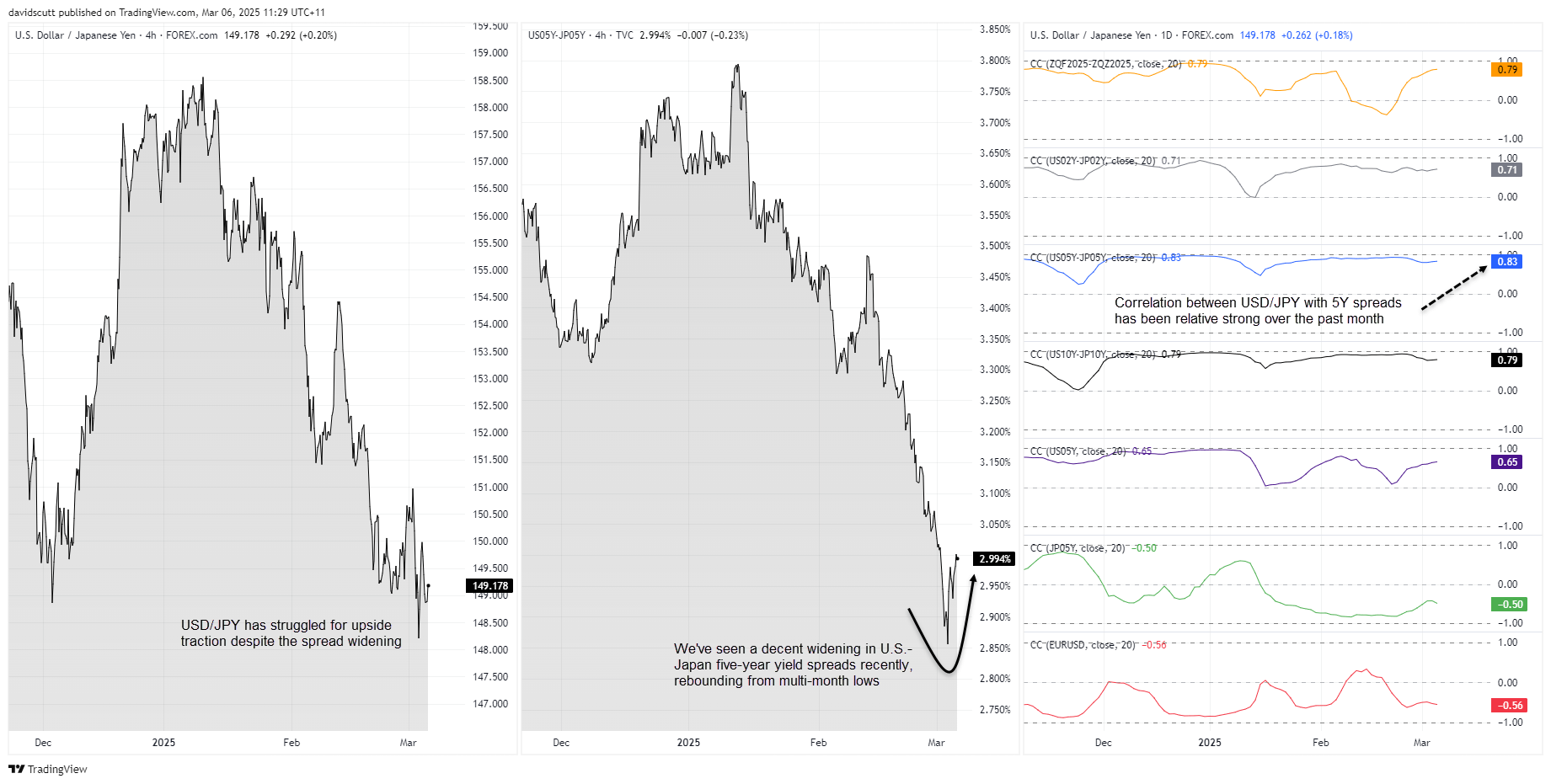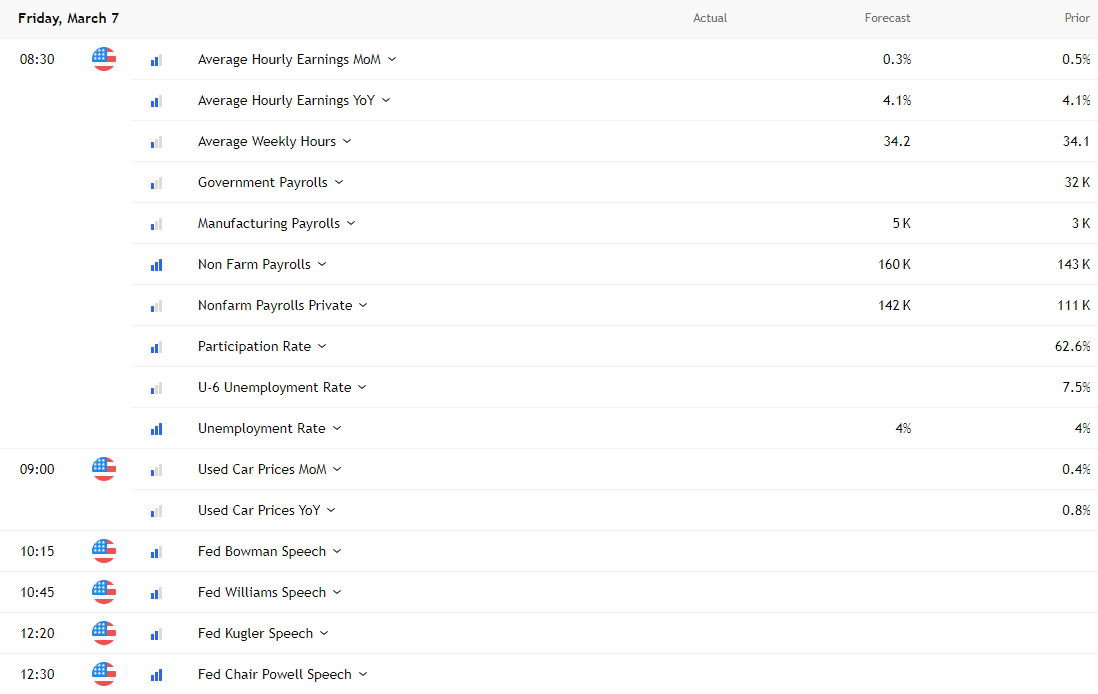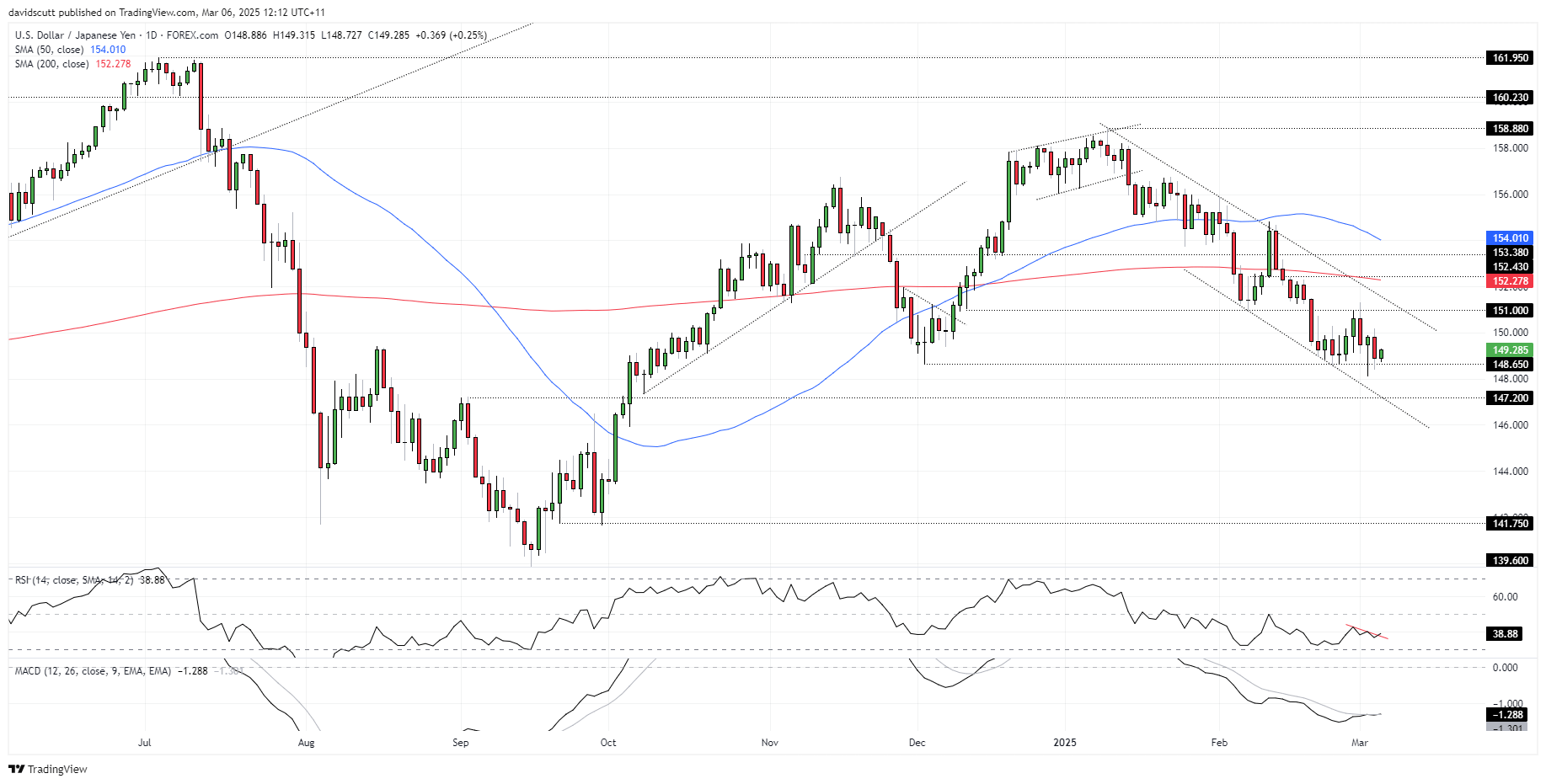- USD/JPY trades heavy despite widening yield differentials
- Non-farm payrolls loom large as traders focus on the unemployment rate.
- Mixed signals in data could see choppy trade, focus on unemployment rate
Summary
USD/JPY remains heavily influenced by rate differentials rather than fluctuations in the US dollar against currencies like the euro, putting Friday’s U.S. nonfarm payrolls report front and centre for traders. With increasingly heavy price action and downtrend resistance closing in, it looms as a potential key moment for longer-term directional risks.
USD/JPY Fixated on Rates, Not Dollar
USD/JPY remains beholden to rate differentials, as seen in the chart below. Over the past month, it has registered a correlation coefficient of 0.83 with 5-year yield spreads between U.S. Treasuries and Japanese government bonds (JGBs), the strongest relationship of any tenor across the U.S. and Japanese curves.
In contrast to earlier this year, there’s no obvious driver within spread movements, with coefficient scores for U.S. and Japanese 5-year yields not particularly strong. Despite recent fireworks in the euro, USD/JPY has not been overly inversely correlated with EUR/USD over the same period.

Source: TradingView
Visually comparing movements in USD/JPY with 5-year yield spreads, you could argue the former should be trading higher than its current level. There’s been a decent widening in yield differentials in recent days, yet USD/JPY has struggled to push meaningfully higher—that’s telling. It may reflect the proximity of Japan’s financial year-end later this month or potentially capital outflows from the U.S. to other regions, such as Europe. The relationship between yields and USD/JPY remains, but it’s not delivering sizeable moves.
Non-Farm Payrolls Primer
The lack of upside traction in USD/JPY is interesting as the February U.S. non-farm payrolls report approaches. I’ve made it clear numerous times that the unemployment rate is the most critical piece of information, capable of overriding the payrolls figure if they send conflicting signals. If both align, it will likely generate the strongest market movement.
Source: TradingView
Heading into payrolls, market sentiment appears skewed towards a soft outcome given recent data and news flow. There has been ample coverage of Elon Musk’s DOGE endeavours to cut government waste, along with the collapse in the Atlanta Fed GDPNowcast model estimate for March quarter growth. That may counter some of the downside risks in USD/JPY stemming from the unconvincing price action seen in March.
USD/JPY Scenario Analysis
USD/JPY remains in an established downtrend, more recently trading in a sideways range between 151.00 on the topside and 148.65 on the downside. These levels should be the initial focus ahead of the payrolls report.
Source: TradingView
If we see an upside surprise in unemployment and downside surprises in payrolls and hourly earnings, it would be the most potent scenario for USD/JPY downside, likely overwhelming bids beneath 148.65 and bringing a retest of the intersection of horizontal and channel support at 147.20 into play.
Alternatively, strong payrolls and earnings combined with unemployment remaining steady or lower may trigger a powerful countertrend rally, possibly putting offers above 151 and downtrend resistance under threat.
If we get mixed signals from the report’s key components, either side of the 148.65-151 range may be tested before the unemployment reading starts to assert its authority on the U.S. rates outlook.
After the payrolls report drops, it will be followed by speeches from Federal Reserve officials, including chairman Jerome Powell. These are on the calendar for reason, meaning if there are any implications when it comes to the rates outlook, it will be communicated via these events.
